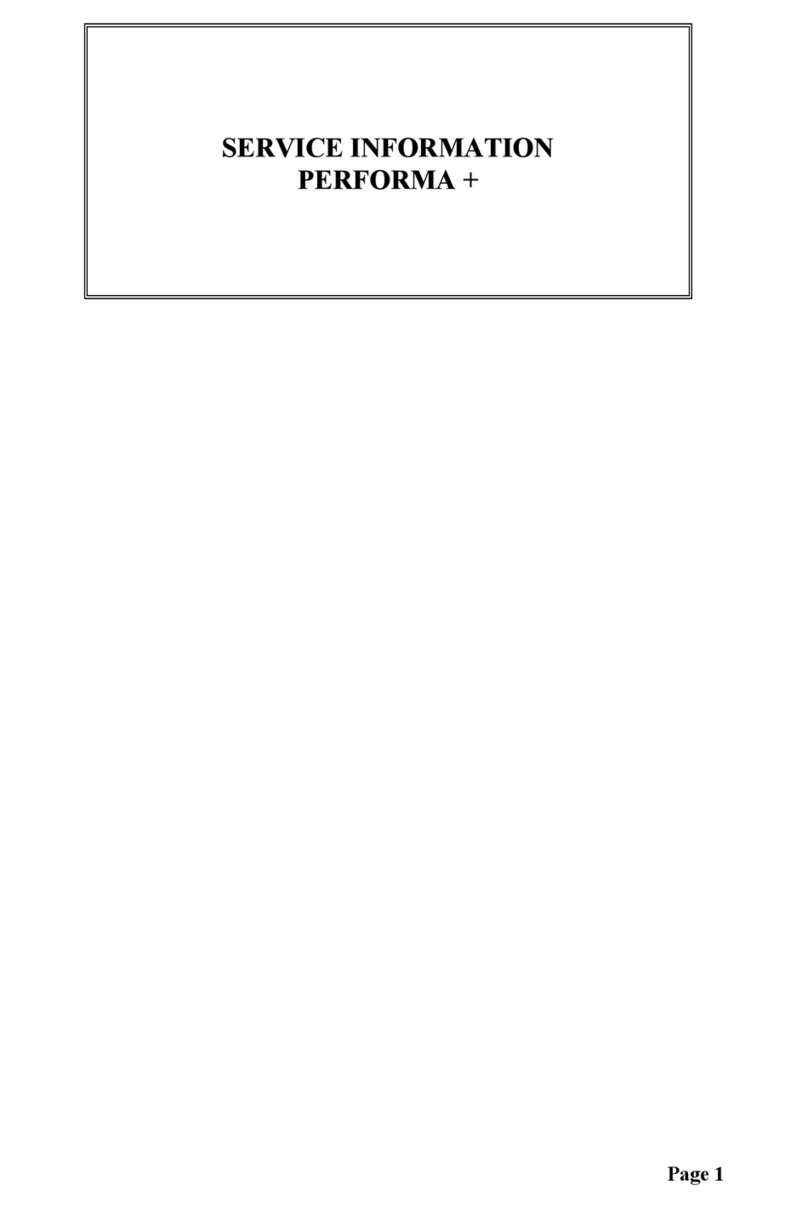
5.6 Vacuum unit. .........................................................................................................................22
5.6.1 General information....................................................................................................22
5.6.2 Vacuum circuits. .........................................................................................................23
6. Ultrasound heads (only Guidance C) ............................................................................ 24
7. Yearly checkup and safety test...................................................................................... 25
7.1 Safety inspection....................................................................................................................25
7.2 Inspection interval. ................................................................................................................25
7.3 Inspection results. ..................................................................................................................25
7.4 Different current wave forms for checkup.............................................................................25
7.4.2 General Functional Inspection ....................................................................................27
7.4.3 Functional Inspection Electrotherapy .........................................................................27
7.4.4 Electrical Safety Test According to VDE 0751..........................................................28
7.4.5 Result of safety inspection..........................................................................................28
8. SYSTEM SETTINGS MENU. ..................................................................................... 29
8.1 Contrast settings. ...................................................................................................................29
8.2 Language. ..............................................................................................................................29
8.3 Sound settings........................................................................................................................29
8.4 Change pre settings................................................................................................................30
8.5 Stand by time. ........................................................................................................................30
8.6 Plate electrode test. ................................................................................................................30
8.7 Cable test. ..............................................................................................................................32
8.7.1 Vacuum cable test.......................................................................................................32
8.7.2 Electrode cable test. ....................................................................................................33
8.8 System information................................................................................................................34
8.9 First screen.............................................................................................................................35
8.10 Copy parameters. ...............................................................................................................35
9. SERVICE MENUS. ...................................................................................................... 36
9.1 Counter working hours. .........................................................................................................36
9.2 Error history...........................................................................................................................37
9.3 Reset working hours. .............................................................................................................37
9.4 Reset all user settings.............................................................................................................38
9.5 Total reset settings. ................................................................................................................38
9.6 Special service menu. ............................................................................................................38
10. UPGRADING SYSTEM SOFTWARE ........................................................................ 40
10.1 General information. ..........................................................................................................40
10.2 Which tools are required ? .................................................................................................40
10.3 Downloading the software. ................................................................................................40
10.4 Troubleshooting. ................................................................................................................41
11. HARDWARE LABELS................................................................................................ 42
11.1 Upgrading the hardware code. ...........................................................................................42
12. TROUBLE SHOOTING ............................................................................................... 43
12.1 General information. ..........................................................................................................43
12.2 Interpreting error codes......................................................................................................44
12.3 List of error codes. .............................................................................................................45
12.3.1 Drivers (0XX).............................................................................................................45
12.3.2 Operating system (1xx)...............................................................................................46
12.3.3 Electrotherapy task (2xx)............................................................................................46
12.3.4 Ultrasound task (3xx) NOT FOR GUIDANCE E ......................................................47
12.3.5 Laser task (4xx) NOT FOR GUIDANCE E/C............................................................47
12.3.6 User interface task (5xx).............................................................................................47
12.3.7 System task (6xx) .......................................................................................................48
12.3.8 Processor test (1000)...................................................................................................49
13. Trouble shooting vacuum circuits................................................................................. 51
Phyaction Guidance E/C – service manual version 0.5 Page 3




























